News & Events
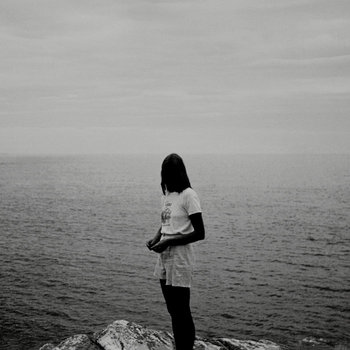
Midwife is the moniker of multi-instrumentalist Madeline Johnston. She lives and works in San Miguel, New Mexico by way of Denver, Colorado, where she spent the better half of the past decade developing her experimental pop project. As a self taught guitarist and recording engineer, Midwife explores dark subject matter in her anthemic, soft-gaze hits. Self-described as "Heaven Metal," or emotive music about devastation - catharsis.
When 2020 began, Johnston had several national and international tours planned, but the pandemic shifted her focus back to recording, and back to her internal landscape. Midwife’s third full length record, Luminol, was written and produced during quarantine.
Luminol is a chemical used by forensic investigators to reveal trace amounts of blood left at a crime scene. When it reacts with blood, luminol emits a chemiluminescent blue glow that can be seen in a darkened room. In the same way this chemical reveals evidence at a scene, Midwife is interested in profound truth - turning trial and tribulation into sources of light.
Luminol navigates themes of incarceration, locus of control, clarity, self harm, confinement, agency, and truth-seeking, all erupting in a bioluminescent Rothko color-field of blue.
The Luminol album cover shows a dark figure standing at the edge of a body of water. It symbolizes the way humanity had been on a precipice throughout 2020, to later find out they had been there all along. Being one of Midwife’s most personal records, Luminol's cover artwork is a picture of Madeline Johnston's mother taken in the 1980s, when she was the same age as Madeline at the time of recording. By redacting the figure, Johnston hopes that anyone could see themselves there, by the water, as a form leftover when all the elements of their lives are stripped away and what is left is a host.
Out July 16, 2021 on The Flenser.

Jeremy Hurewitz's intuitively original, transcendental work as rootless initially crossed our path through cosmic-yet-earthbound instrumental acoustic guitar tapes on two of our favorite labels, Cabin Floor Esoterica and Aural Canyon. Sensing a kinship in sound, we connected online and linked up for a joint rootless & Starbirthed tour across the northeastern US in summer 2019. It was between soundcheck and set on the second day of our tour together that Jeremy recounted to us the fascinating details of the rootless album he worked on before his recent move from Los Angeles to New York.
Recorded April 2019 in the LA studio of sculptor Michael Todd, the two-day session found Jeremy's double-tracked guitar compositions and improvisations meeting the inspired multi-instrumental expression of Mexican musician and folklorist Luís Pérez Ixoneztli. Overseer of a collection of priceless, one-of-a-kind, indigenous instruments from Mesoamerica (many of them pre-Colombian), Luís Pérez’s deep understanding and reverence for these instruments is apparent in his approach to the music. The recording process for each track began with Jeremy's stunningly evocative widescreen fingerstyle acoustic guitar, after which Luís Pérez would listen, consider, and then visit his treasure trove of instruments, returning with several (or many) to contribute to the track. From ocarinas and small whistles that can resemble forest sounds ("peculiar travel suggestions") to dried cocoon shells strung together and used as shakers, to clay flutes that are possibly over a thousand years old ("silence has a sound"), Luís Pérez’s contributions were as spiritual as they were grounded in musical technique. Befitting Jeremy's own experimental, avant-garde approach, some of these contributions moved beyond ancient folk instruments, such as simply pouring water in a tub (on "shared consciousness") or Shamanic breathing ("gorillas in the zoo").
Naturally, upon hearing Jeremy's account of the session we couldn't wait to hear the results. Still, pressing play on the private stream a few weeks later, we could hardly believe the songs and sounds that emerged - existing in form far beyond what our imaginations could conjure. Jeremy's instrumentals create entire worlds, lucid visualizations and emotions colored in perfect detail by the singular presence of Luís Pérez Ixoneztli. Here, rootless has produced an album in perfect harmony with the spiritual and sonic blueprint that Flower Room has articulated across 18+ releases, and this represents a monumental moment for an imprint created solely as a private press label for our own in-house work. For the first time, we welcome a new voice, vision, and source of expression to the Flower Room family, and are proud and ecstatic to present the wholly original melding music of this most high collaboration: rootless' vinyl debut, docile cobras.
More information can be found here.

"Fantas" is the epic opening track on Caterina Barbieri’s acclaimed 2019 release Ecstatic Computation. The original "Fantas" laid out a magical path of patterns leading the listener on a journey into the sound itself. Fantas Variations maps out eight new potentials sprung from this initial path as constructed by a diverse mix of artists lending to a wide spectrum of new works extrapolated from the original work. For this project Barbieri invited friends and long time collaborators from a variety of musical backgrounds to create a more sustainable and inclusive landscape in terms of stylistic, geographical, gender and generational balance. The results are a diverse array of approaches and instrumentation which blur the boundaries between the acoustic and electronic.
Fantas Variations embraces a platform for mutual exchange and support between like-minded artists, where active and collective re-imagination is prioritized over the traditional model of remixes, which is often strategic, functional and more passive.
Longtime friend and collaborator Kali Malone rearranged "Fantas" to a slowed-down, austere and eerie version for two organs. Evelyn Saylor created a piece for a vocal ensemble consisting of her, Lyra Pramuk, Stine Janvin and Annie Garlid, joining forces to express the choral, psychedelic and vitalistic nature of the piece. Barbieri's former guitar professor at the Conservatory in Bologna, Walter Zanetti, composes "Fantas" for electric guitar, by translating every single gesture of the original electronic piece into a personal, nuanced and detailed interpretation. Bendik Giske's reinterpretation for saxophone and voice captures the atmospheric essence of "Fantas" and its psychic meteorology. Longtime collaborator and along with Barbieri the other half of the outfit Punctum, Carlo Maria, resynthesizes "Fantas" for TR808 and MC202, bringing a more club-oriented dimension of the piece to life whilst unveiling the sonic continuum between rhythm and pitch through a sensitive timbral approach. Jay Mitta's Singeli reinterpretation of "Fantas" transpires with pitched-up percussion and turbo-fast poly-rhythmic patterns unleashing the frenetic, shifting, transformative matter within the piece to a higher plain of euphoric dance. Baseck's variation is a rave fantasia, where the prismatic trance of the original is channeled into fierce, uncompromising hardcore, whilst Kara-Lis Coverdale's take is a phantasmagoria for piano that gently, yet inexorably, captures the relentlessness chimerical qualities of the original, unveiling its spectral backbone.
More information can be found here.
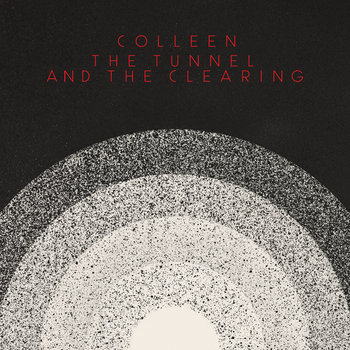
Colleen is an aboundingly inventive composer and artist. For two decades, Cécile Schott as Colleen has crafted welcoming, enchanting, and bewildering music. The multi-instrumentalist and vocalist’s timeless compositions make use of carefully selected tools to mold memories into transcendent splendor. The Tunnel and the Clearing finds Schott at her most vulnerable and confident, invoking contemplative and swirling organ processed through analog electronics, steady drum machine syncopations and her distinctive voice to embody breaking through the nexus of compounding transitions. On an album centered on processing the complicated washes of emotion through tribulations and revelations Colleen presents a vision of breathless clarity.
The Tunnel and the Clearing was developed over a period of transformative change. Colleen began work on the album in 2018 only to be met with extreme fatigue from a previously undiagnosed illness that all but halted her work. The following months and years of treatment and adjustment eventually led to relocating to a new home and studio in Barcelona, which was soon followed by lockdowns and ultimately the dissolution of her longtime partnership. The impact of deep reflecting on these cumulative experiences found Schott completely reimagining her compositional practices through her enduring gift for reinvention. Schott spent months in near complete silence apart from composing and ruminating on her newfound perspective through her music. Says Schott, "Never before had I felt so profoundly the power that music has, through harmony, melody, rhythm and sound itself, to express the whole range of human emotions." The resulting seven pieces investigate the complex, at times contradictory relationship between excitement and fear, anger and understanding, struggle and triumph, all focused on a reconstruction of the self.
Colleen's albums are unified by their employment of distinct and personal instrumentation to tell their story. From albums built around music boxes or viola da gamba to albums built around electronics, her music remarkably shares a dreamlike modern quality. From the early stages of working on The Tunnel and the Clearing, Schott restricted herself to using analog electronic instruments like the Elka Drummer One, the Roland RE-201 Space Echo and Moog Grandmother synth, coupled with Yamaha organ keyboard and select Moog effects. This limited instrument selection was inspired by years of listening to Jamaican and African recordings where musicians were pushed to maximize their creativity with minimal tools. A magnitude of atmospheres are summoned from deceptively simple combinations, from the meditative pulse of "The Crossing" to the frothy cascades of title track "The Tunnel and the Clearing." Pieces like "Revelation," or the brisk-paced "Implosion-Explosion" respectively showcase the most diverse use of harmony and the most incisive application of production technique in all of Colleen's catalog. Stunningly, Colleen achieves the rich emotional intricacy and the lush density of textures on The Tunnel and the Clearing through almost entirely live performance and processing.
The detailed and affecting compositions of The Tunnel and the Clearing mirror Colleen's grappling with her own psyche. Schott elaborates "I found direct correspondences between my internal discourse, its obsessive, frantic attempts at making sense of what I could not understand, and the music I was making, with motifs functioning as questions and answers, doubts and assertions." Clicks, hums, warbles and throbs emulating our evolving internal worlds, an "emotional noise." A musical journey through the tunnel toward the clearing at its end. An ending which is also a beginning. "The clearing is what is always out there: a vast expanse of space, light and possibilities," says Schott. The Tunnel and the Clearing is a work of lucid reverence, a constellation of marvels suspended in air.
More information can be found here.

The follow-up to Johnson’s acclaimed Balsams LP, The Cinder Grove delves further into the compositional possibilities of the pedal steel guitar. This halcyon collection of tracks draws on a wider pallette of sounds, adding strings and piano, to dive deeper into the sound bath of Johnson’s meditative music.
The Cinder Grove is a profound, affecting statement on the nature of loss and irreplaceability as well as a major addition to the canon of Johnson’s work. It's a suite of requiems for lost places. Many of the spaces that once fostered affordable living and creative work now only exist in sonic memory, like the echoes of ghosts. Like much of the California landscape in recent years, some of these spaces having succumbed to fire. Others, to the equally inexorable forces of gentrification. While his 2017 LP Balsams was intended to provide the listener with a space for respite and calm—even healing—The Cinder Grove seeks to remember what has been lost while celebrating the resilience of the human spirit and the natural world.
In making The Cinder Grove, Johnson dug through archival recordings from Oakland DIY performance spaces to digitally extract their reverb and echo qualities. He then applied these effects—as well as the digitally modeled reverberation of a redwood forest—to the tracks on The Cinder Grove, allowing the pieces to bask in the lush virtual spaces, and in the process realized that these sonic re-constructions can only ever be approximations. We try to make spaces what we want them to be, whether in memory or in the material present.
More information can be found here.
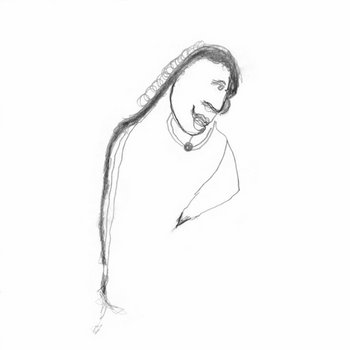
In Immobile Air is Abul Mogard’s new solo album since 2019's Kimberlin OST, an epochal assembly of widescreen ambient works made during lockdown in Spring 2020.
Master of harmonic empathy Abul Mogard makes an ever welcome return to Ecstatic with a suite of patented pathos for testing times, mostly generated from an old Bechstein upright piano built in 1891.
Inspired as much by the instrument's rich harmonic textures as the Italo Calvino short story that lends the album's track titles, In Immobile Air collects five works written by Mogard during the ill-fated Spring of 2020.
Thematically, the album dwells on Mogard's typical concerns with memory and states of mind, and comes to feel like the musical rendering of a soul preoccupied by their mortality.
As such, it can be read as a suite of instrumental hymns for a world coming to terms with its current condition and state of static unrest, evoking a stillness of air in its glacial movements while reflecting a gnawing sense of something impending. Yet, it's simultaneously and quite profoundly soothing in its widescreen harmonic shifts along the knife-edge between bliss and dread.
The album arrives after a pause in Mogard's prized oeuvre since 2019's And We Are Passing Through Silently with a humbly arresting presence that perfuses all of his best work and keeps his listeners rapt for more.
The handful of pieces speak to both the artist’s rich inner life, and the inner voice of his instrument. Using analog and digital equipment, he transforms the melancholic simplicity of his melodies into a quietly dreamlike space.
The title track lays out this bare aesthetic with wilting, elegiac notes that vaporize into a timbral thizz, before its brooding course takes in the oblique beauty of "Clouds" and tarry drones recalling recent Deathprod moves in "Black Dust." He finally emerges from the murk most poignantly with the clearer keys of "Sand," only to shore up somewhere more contemplative, abstract, in the low key magisterial expanse of "On a Shattered Shell Beach."
The drawings featured in the cover artwork were made by Marco de Sanctis at the same time as the music.
"I think of these drawings as images from his memory, snippets from his past, like Calvino's collection of sand," Mogard offers. "But perhaps they were just drawings."
More information can be found here.
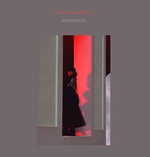
Impedance, an entirely instrumental album spanning 4 sides, contains powerful rhythmic sequences, heart-beating frequencies and hypnotic loops that are paradoxically encapsulated in carefully crafted compositions which are full of secret passages and hidden doors. Kalancea's work creates ungraspable sonic experiences, which take us over, immersing us in powerful and mind altering soundscapes.
There's no quick payoff on Impedance. This is the sound of new, patient electronic music full of depth and substance.
Alina Kalancea is a Romanian sound artist and composer based in Modena, Italy. She has studied sound design and synthesis with Enrico Cosimi and collaborated with producer Alex Gamez, and artists Julia Kent and Raven Bush.
More information can be found here.

"Sunburned Hand of the Man might be the last of the great American free rock collectives. There was a time, not too long ago, when every region of this great republic could boast of its own visionary troupe of seekers and improvisers, thrumming at the frequency of the illuminated world. There was Pelt in the south and Jackie-O Motherfucker in the Pacific northwest, No-Neck Blues Band in New York and the iridescent Jewelled Antler out in the Bay Area. And up in the New England wilds, there was The Sunburned Hand of the Man. David Keenan of The Wire memorably called it the New Weird America. It felt to me like the mystical democracy of Walt Whitman. It was never arch or jittery or wiry; it sprawled like the continent and massed like the seas. It produced some of the most singularly thrilling performances that I ever had the privilege of witnessing. Most of those groups have since gone dormant—disbanded entirely or decomposed into smaller units and solo projects. But the Sunburned Hand of the Man remains.
Or rather, we might say that the Sunburned Hand has returned. The sudden appearance of the phenomenal Headless in late 2019 felt like something of a resurfacing. There had, of course, been a steady trickle of obscuro cassettes and CD-Rs over the years, filling out an already bewilderingly immense and impossible to master discography. But Headless felt like their first proper album since the release of the Kieran Hebden-produced A on Ecstatic Peace! all the way back in 2010. It appears that it was no one-off.
The thing that one has to remember about Sunburned Hand of the Man is that while they were no less committed to vast, ritualistic summonings than their siblings in the American free rock underground, they were perhaps uniquely capable of channeling that cosmic funk. There’s a throb and a groove to Sunburned's music that made it as much body music as head music. This is a different kind of American weirdness than that which conjures ghosts and threatens to tear down the veil between worlds. This is “free your ass” weirdness that chugs and bounces. It makes us want to get out of our heads where we’ve all been trapped these past months and drive on the freeway or bop down the street or loaf like Walt Whitman in the stoned sun. Like the man said, it makes us want to taste the campfire. Pick A Day to Die. Sure, but definitely not today."
--Brent S. Sirota--
More information can be found here.
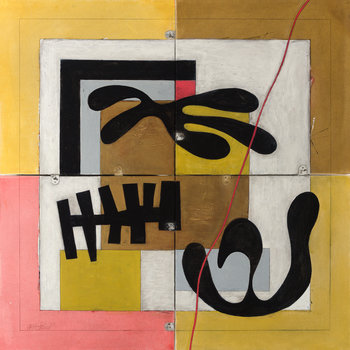
Ray is Ashley Paul's bright, sensual return to Slip: a lifting, delighting suite of yearning winds, loose beats, and cocooning, humid bass coming together and falling apart as songs.
The LP airs Paul's new trio, alongside bass clarinettist Yoni Silver and bassist Otto Willberg, who fatten out and shine light on her singularly intimate, multi-instrumental with mystery and grace. 2018's Lost In Shadows wrote into the bewildering ecstasy of recent motherhood with a tingling resolve. On Ray - recorded remotely during lockdown - Paul's deliciously hesitant songcraft is an outpouring and an anchor in freshly tumultuous times.
Says Ashley:
"Over the past six months I've found myself needing music in a new way, a way of coping. I found again albums I had loved in the past, full of melody and humor, to cancel out the barrage of terrible news happening outside. I think this album is a reflection of that need. There is the playfulness of spending my days with our four year old, and the hours spent tending to plants in the garden and examining bugs, and also the pain of missing family and friends. It's hard for me to fully comprehend the breadth of emotion I've felt recently but maybe this is a small window.
The trio idea had been formulating in my head for months, and then lockdown happened. At first I was very disappointed and thought I'd be waiting forever to finally make it a reality, but time passed. I started working on a new album and could only hear it with these guys. We recorded remotely. I sent material in a variety of ways; written, aurally and verbal ideas/queues, sometimes with just a shell of a track and other times nearly completed. I wanted all our voices to be present, and to allow freedom in the parts for interpretation and improvisation. Maybe because we've all worked together in various situations and are friends, I’m not sure, but it came together naturally, magically and quickly."
More information can be found here.
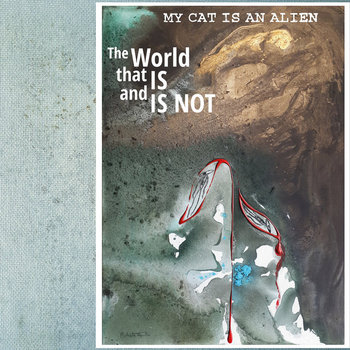
The World that IS and IS NOT is the enigmatic title of My Cat Is An Alien's new "concept album."
The World that IS and IS NOT is the existential reflection of MCIAA on 2020: a pandemic scenario where everything seems to vanish into the Void.
Explicitly dedicating this new studio album to the dark ages we're all living through, more than ever MCIAA stand strong to claim that Music and Art are the primary and true "cure" for spiritual disquiet and moral despair.
Thus the music herein is highly spiritual, sensitive, soft and warm… surprisingly lyrical. Its celestial melodies cannot but induce to transcendental meditations. MCIAA offer a one-way ticket to still unexplored otherwordly territories and better realms of space-time consciousness.
An inborn wisdom that Roberto Opalio resumes in his poem handwritten on the album insert: "In the endless vortex of No-Thing / […] I still do believe / Art can save my Spiritual Noise soul."
Produced by MCIAA in multi-dimensional, fully dynamics-frequency spectrum "STEREOALIEN FIDELITY."
Released on the renewed Opax Private Press imprint in a first, ultra-limited and hand-numbered edition of 100 Silver Color Vinyl LPs, housed in full-color printed jacket with folded cover/insert on Italian fine art linen textured 250g cardboard. Includes a 70x50 cm Poster. Cover and poster painting by Roberto Opalio. Design by MCIAA.
More information can be found here.

